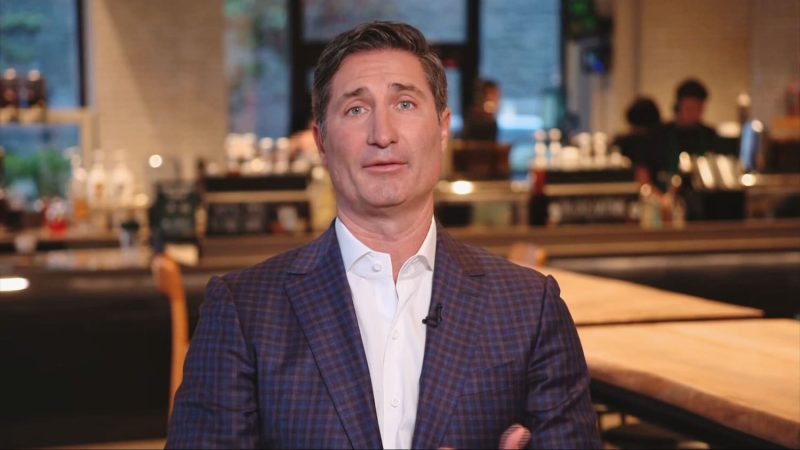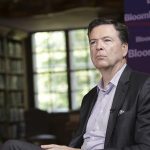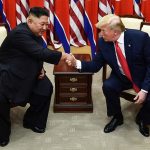
Starbucks CEO Brian Niccol shared more details about the company’s turnaround strategy during the company’s quarterly conference call on Wednesday.
For three straight quarters, Starbucks has reported declining sales. But the coffee chain is hoping that some easy tweaks to its U.S. business will pay off and help reverse the trend as it plots a more ambitious and comprehensive game plan.
Many of the coming changes are meant to help Starbucks achieve a smaller goal: delivering a customized drink to the customer in under four minutes. About half of current transactions are within that threshold, according to Niccol.
As Starbucks focuses on the turnaround, the company is also planning fewer new locations and renovations in fiscal 2025 to free up capital, CFO Rachel Ruggeri told investors on the call.
Shares of Starbucks were flat in trading Thursday after the company reported that its revenue fell for the third straight quarter.
Here’s how Niccol plans to help Starbucks’ sales rebound:
Starbucks customers have become used to walking into a cafe and seeing a counter crowded with mobile orders. Niccol wants to change that.
“When it works well, it’s great, but sometimes it can be a challenge for both customers and partners,” he told investors on the company’s conference call.
Mobile orders account for more than 30% of Starbucks’ U.S. transactions.
Niccol said Starbucks is working to improve the accuracy of the app’s timing, so customers know when their drinks are ready. Plus, he wants to better separate mobile order pickups from in-person ordering inside restaurants and curtail how much customers can customize their drinks.
“Right now, I think there’s some customization specifically in the mobile order app execution that’s just really wide and unnecessary,” Niccol told CNBC. “So I just think that we need to put better guardrails in place so that we get you access to customization that’s correct for the drink you’re ordering, and then also it allows our baristas to be more consistent with what they execute.”
The Starbucks menu will be getting a makeover.
Niccol said the coffee chain needs to focus on “fewer, better” offerings. Slimming down the menu will make it easier for baristas to make every drink consistently. It should also improve speed of service since they’ll have fewer drink recipes to remember.
“There’s always a long tail on the menu, and those items, frankly, we don’t execute all that great,” Niccol said, adding that baristas often take longer to make drinks that are unfamiliar.
Niccol said Starbucks would also be taking a look at the items that it wouldn’t have put on the menu if the four-minute standard was already in place.
While the changes may disappoint some customers, Niccol said he thinks that they’ll appreciate faster, more consistent service in the long run.
As part of Niccol’s “Back to Starbucks” plan, he wants the company’s locations to feel like “third places” for customers to work and socialize in outside of their homes and offices.
The coffee chain’s positioning as a “third place” helped it grow into a global behemoth, but somewhere along the way, it lost that reputation. Niccol said he wants to reintroduce more personal touches, like serving coffee in ceramic mugs to customers who choose to linger in cafes. Sharpies will also be making their triumphant return, after being supplanted by printed labels.
Starbucks is also reviewing its store designs, with a focus on bringing back more comfortable seating and amenities.
“The reality is the majority of what we have are these cafes that I think don’t have the right seats, potentially have the right texture, don’t have the right layers, don’t have the right warmth. We need to bring that back,” Niccol said.
In recent years, the company has rolled out more pickup-only locations, with little to no seating, particularly in urban areas. Niccol said even those cafes could be more welcoming to customers.
“I think there are design elements that can still bring forward this idea of a community coffeehouse, even in some of the executions that we’ve made that just don’t lend itself to putting the full, traditional coffeehouse experience,” he told CNBC.
In the early days of the Covid pandemic, Starbucks banished its condiment bars behind the counter. Since then, when customers want to add milk or sugar to their drinks — even a simple drip coffee — they have to ask baristas directly.
But that will change soon. Niccol said the condiment bars will reappear, freeing up more time for baristas and easing some customer headaches.
Starbucks has already been increasing the average number of hours that it schedules baristas. More shifts — and more consistent scheduling — have lowered the company’s turnover and helped overall retention.
But Niccol also wants to make sure that cafes are properly staffed, from the busy morning rush to “shoulder hours,” leading up to and away from peak times.
Since his first week on the job in early September, Niccol has said that he wants to revamp the company’s marketing. On Wednesday’s call, he said he wants its marketing to target a broader audience than Starbucks Rewards members and to showcase the quality of Starbucks coffee.
Customers can also expect to see fewer deals as part of the marketing shift. Niccol said discount-driven offers are “ineffective” and can overburden baristas.
Niccol comes from a marketing background and started his career at Procter & Gamble. He then moved to Yum Brands and worked in various marketing positions before ascending to lead Taco Bell. That marketing expertise was useful when he joined Chipotle and will likely also prove valuable at Starbucks. He’s already tapped a former Chipotle alum, Tressie Lieberman, as the new chief global brand officer of Starbucks.
After years of pleading from customers, Starbucks will finally drop the extra charge for its milk substitutes, starting Nov. 7. The change means some customers could save more than 10% on the cost of the drinks, according to the company.
More broadly, Starbucks isn’t planning to change North American prices through the next fiscal year, which ends around early October, in the hopes of improving consumers’ perception of its pricing.
Executives have pointed to pushback against higher prices as one reason why occasional customers have stopped visiting its locations as often.






